Related Research Articles

Matsumoto Hakuō II is a Japanese kabuki actor, one of the most popular tachiyaku currently performing.
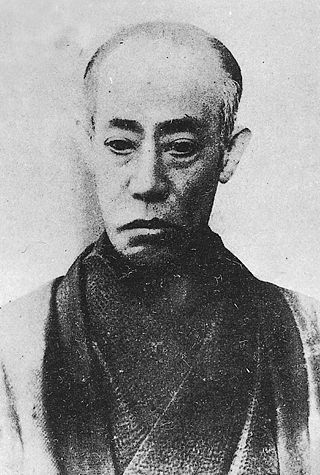
Ichikawa Danjūrō IX was one of the most successful and famous Kabuki actors of the Meiji period (1868–1912).
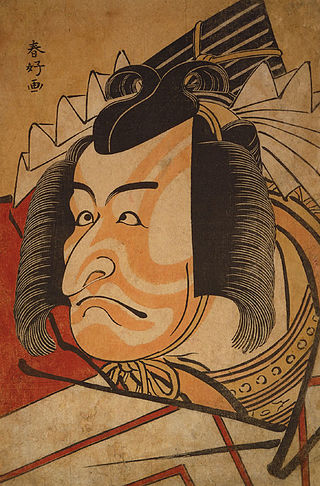
Ichikawa Danjūrō V also known as Ichikawa Ebizō, was one of the most famous and popular Japanese Kabuki actors of all time. Throughout his career, Danjūrō would hold some of the highest ranks in the hyōbanki, an annual Edo publications which evaluated actors and performances. At one point in 1782, he was even granted the rank of tōji-muri-hiiki.

Matsumoto Hakuō I, born Junjirō Fujima, was a Japanese kabuki actor, regarded as the leading tachiyaku of the postwar decades; he also performed in a number of non-kabuki venues, including Western theatre and films. Taking the name Hakuō upon retirement, he was known as Matsumoto Kōshirō VIII for much of his career.

Aragoto (荒事), or 'rough style', is a style of kabuki acting that uses exaggerated, dynamic kata and speech. Aragoto roles are characterised by the bold red or blue makeup worn by actors, as well as their enlarged and padded costumes. The term "aragoto" is an abbreviation of the term "aramushagoto", which literally means "wild-warrior style".

Matsumoto Kōshirō VII was a Japanese actor. He was one of the leading tachiyaku Kabuki actors of Japan's Meiji period (1868–1912) through the late 1940s.
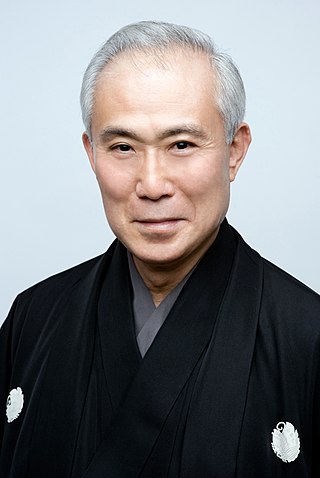
Nakamura Kichiemon II was a Japanese actor, kabuki performer and costume designer. He was a so-called Living National Treasure.

Ichikawa Danjūrō VIII was a Japanese kabuki actor of the prestigious Ichikawa Danjūrō line. He was a tachiyaku actor in the aragoto style, like all members of the lineage, but particularly specialized in the roles of young lovers, for which he was extremely popular. Danjūrō committed suicide in Osaka in 1854.
Shunsen Natori was a Japanese woodblock printer, considered by many to be the last master in the art of kabuki yakusha-e "actor pictures".
Daichūshingura (大忠臣蔵) is a Japanese television dramatization of the events of the Forty-seven Ronin. The first episode aired on January 5, 1971, and the 52nd and final episode appeared on December 28 of the same year. The NET network broadcast it in the Tuesday evening 9:00–9:56 prime-time slot in Japan.

The Ichimura-za (市村座) was a major kabuki theatre in the Japanese capital of Edo, for much of the Edo period, and into the 20th century. It was first opened in 1634 and was run by members of the Ichimura family for much of the following nearly three centuries before it was destroyed by fire in 1932. It has not been rebuilt.
Benizuri-e are a type of "primitive" ukiyo-e style Japanese woodblock prints. They were usually printed in pink (beni) and green, occasionally with the addition of another color, either printed or added by hand.
Tachiyaku is a term used in the Japanese theatrical form kabuki to refer to young adult male roles, and to the actors who play those roles. Though not all tachiyaku roles are heroes, the term does not encompass roles such as villains or comic figures, which form their own separate categories. The hero or chief protagonist of a kabuki play is nearly always a tachiyaku role, and the head of a troupe or acting family typically specializes in these roles.
Momijigari (紅葉狩) or Maple Viewing is a Japanese narrative, performed as theatre in kabuki as shosagoto and Noh. It was also the first narrative ever filmed in Japan. The Noh play was written by Kanze Nobumitsu during the Muromachi period. Other titles for the play include Yogoshōgun and Koremochi.
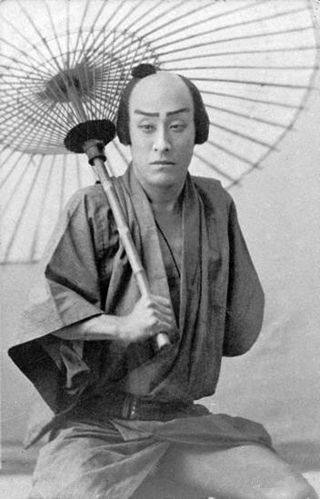
Onoe Kikugorō V was a Japanese Kabuki actor, one of the three most famous and celebrated of the Meiji period, along with Ichikawa Danjūrō IX and Ichikawa Sadanji I. Unlike most kabuki actors, who specialize in a particular type of role, Kikugorō, as a kaneru yakusha, played both tachiyaku and onnagata (women) roles and was best known for his roles in plays by Kawatake Mokuami. Kikugorō was also known as one of the chief actors in the "modern" subgenre of kabuki plays known as zangirimono, featuring Western-style clothes and hairstyle.

Shinobu Terajima is a Japanese actress. Her feature films include Akame 48 Waterfalls (2003) and Vibrator (2003). For her role in Caterpillar (2010), Terajima won the Silver Bear for Best Actress at the 60th Berlin Film Festival while her performance in Oh Lucy! (2017) earned her an Independent Spirit Award nomination for Best Actress.
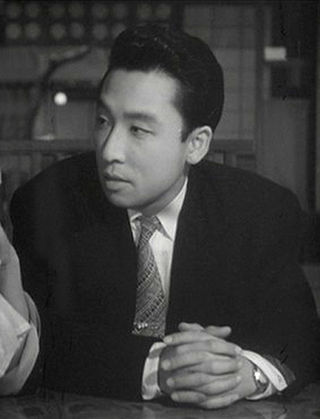
Nakamura Jakuemon IV was a Japanese kabuki actor most known for onnagata performance.
Gyosei Junior and Senior High School is a private Catholic junior and senior high school for boys in Fujimi, Chiyoda, Tokyo. Founded in 1888, it is regarded as one of the country's most prestigious private schools. It is part of a family of Catholic schools administered by the Gyosei Gakuen Educational Association which includes a kindergarten and elementary school.

Momijigari is a Japanese film shot in 1899 by Shibata Tsunekichi. It is a record of the kabuki actors Onoe Kikugorō V and Ichikawa Danjūrō IX performing a scene from the kabuki play Momijigari. It is the oldest extant Japanese film and the first film to be designated an Important Cultural Property.